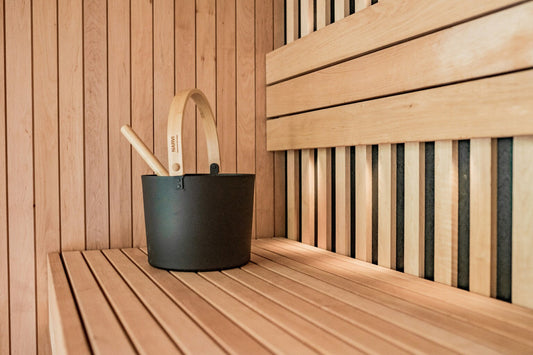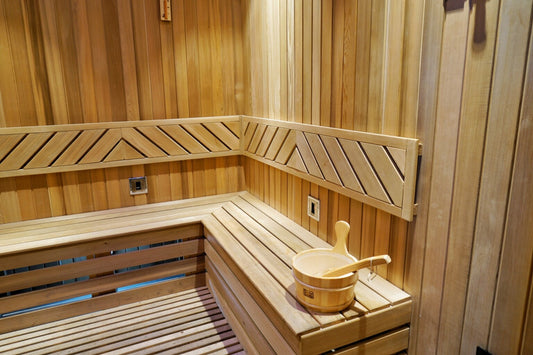
5 Easy Home Sauna Maintenance Best Practices
Maintaining your home sauna isn't just about being clean—it's about making a hygienic, comfortable space that will last for decades. Though maintenance may seem like a chore, it becomes a breeze when simplified into straightforward, regular routines. From dealing with sweat buildup to checking structural wear, these five fundamental maintenance habits will have your home sauna running efficiently and safely.
1. Keep in Control of Daily Surface Sanitation
Once you've finished using your home sauna, minute deposits are left behind. Body oils, dead skin cells, and perspiration residue adhere to wood surfaces. Minute particles tend to seep into porous material, leading to discolouration and bacterial infestation if not regularly taken care of.
Day-by-day wiping-downs: Wipe down benches, backrests, and walls that touched your body using a clean, soft towel or microfiber cloth. Target areas, particularly where sweat has collected.
No strong chemicals: Use a diluted solution of white vinegar (one part vinegar to three parts water) for cleaning. Never use bleach or any cleaning product containing ammonia, which will ruin wood and emit fumes when heated.
Be mindful of concealed areas: Inspect under benches and at joints in corners. These areas tend to hold dust and debris and cannot be seen if not inspected periodically. A hand vacuum can come in handy for these places.
2. Employ Scheduled Deep Cleans
While your daily surface cleaning is your first line of defence, scheduled deep cleaning sessions are important to keeping your home sauna in the long term.
Monthly cleaning list: Remove all removable items, including rocks, water buckets, and thermometers.
Clean seating areas and floors with a soft-bristled brush and ph-neutral wood-safe cleaner.
Warm water and a stiff brush should be used to scrub sauna stones. Clear out any cracked or crumbling rocks that could impede the transmission of heat.
Drain and wash water ladles and buckets to prevent mould growth.
Vacuum ventilation panels and joints: Fine dust settles in the air ducts and on the backrest panels. Vacuum dust with a small nozzle and improve air circulation.
3. Manage Moisture Before It's a Problem
Wood and water don't mix. In your home sauna, humidity needs to be managed to prevent decay and mould.
Airing out after use: Always leave the sauna door open for at least 30 minutes after use. This will provide evaporation of any remaining moisture and reduce the amount of musty odours.
Functional ventilation system: Ensure your home sauna has proper air intake and outtake vents. Check these monthly to make sure they are clear of items like lint or dust.
Install a hygrometer: This fundamental unit assists you in monitoring cabin humidity. Use a relative humidity of 10–35% when the sauna is unoccupied.
Avoid leaving wet towels in: Storing towels or swimsuits in a cool sauna encourages microbial growth. Remove all fabrics immediately after use.
4. Treat the Wood as a Living Surface
The wood inside your home sauna is exposed to extreme temperatures and heat. This leads to fading, cracking, and warping over time if nothing is done about it.
Avoid sealing interior wood with polyurethane or varnish: These varnishes seal the wood from air, which causes the surface to break down once exposed to heat. Use only sauna-specific oils or conditioners that are designed for heat-treated environments.
Light sanding every 6-12 months: This is eliminating surface staining, discolouration, and minor blemishes. Sand with fine-grit sandpaper and sand only in the direction of the wood.
5. Periodic Inspections Prevent Greater Repairs
Prevention is the best medicine, especially when dealing with the electrical and structural components of your home sauna.
Inspect the heater system: Ensure your sauna heater is rust-free, dust-free, or dislodged stones. Heaters should have at least a yearly inspection performed by a certified technician if installed hardwired into your electric system.
Examine for wood rot or mould growth: Little black spots or spongy wood under the benches or on baseboards require immediate attention. Remove and replace the damaged wood as necessary.
Inspect door latches and hinges: Sauna doors should shut securely, but not so that moisture is trapped. Grease hinges occasionally and tighten screws when doors are loose.
Thermometers and timers: Check digital and analog thermometers for accuracy and corrosion. Replace batteries annually and reset thermostats to zero if needed.
External structure check (for outdoor models): Check the roof, shingles, and sealants. Any water leak will affect insulation and eventually the interior woodwork.
Bonus Tip: Keep a Maintenance Log
Record your cleaning and inspection dates in a simple logbook or a shared digital calendar. Note when stones were changed, what cleaners were applied, and any minor problems noted. This is easy to keep up with regularly and to spot patterns before problems get out of control.
By keeping these five best practices in mind, your home sauna will be a clean, functioning, and stress-free retreat for years to come. A bit of attention every few minutes post-use and a neatly planned maintenance schedule make a significant difference in the lifespan of all pieces, ranging from the wooden benches to the electrical heater.
Whether you have a small indoor model or a big outdoor construction, the key to proper maintenance is not perfection but frequency. If you ever feel uncertain about a specific cleaning product or require help replacing worn-out components, refer to Kylin's range of home sauna accessories and equipment. Every little bit of effort you invest in maintaining your home sauna is an investment in its long-term performance.
Struggling with replacement parts, upgrade suggestions, or cleaning products safe for your sauna? Call our support staff of kylin today and get tailored suggestions specific to your home sauna model.







